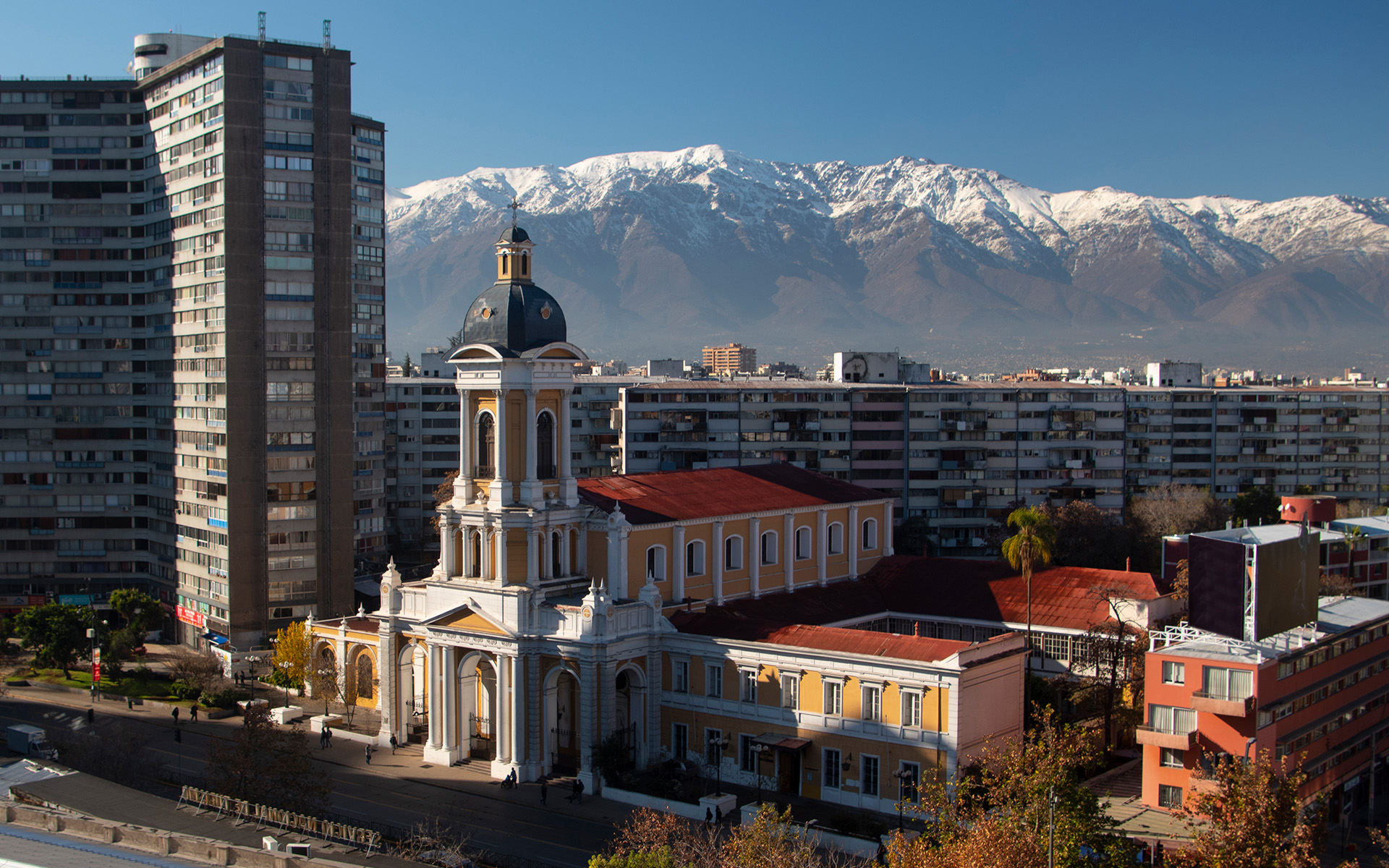One of the region’s wealthier cities and a major commodity exporter, Santiago has developed a strong retail and corporate base with good air connectivity.
City Class Score
| Commercial Hubs | |
| Export Champions | |
| Mobility Connectors | |
| Climate Resilient |
Corporate HQs, MNC presence, branded outlets, hotels, manufacturing, start-up ecosystem,
transport linkages, population, and income.
Go to the class information
Manufacturing, industrial parks, export share and share change by category, air and port
infrastructure, freight time to market, trade agreements, and expert interviews.
Go to the class information
Passenger traffic, flight connectivity, air-cargo flights, port infrastructure, container
ship sailings, and major road networks.
Go to the class information
Coastal and river flooding, extreme rain, extreme heat and humidity, cyclones, and water
scarcity.
Go to the class information
Nestled between the majestic Andes Mountains and coastal plains, Santiago is a
city of striking contrasts. Almost anywhere you stand, a dramatic backdrop of snow-capped peaks
captures the eye. Cerro Santa Lucia and other parks are perfect places to escape from the urban
hustle. Venture into the city’s neighborhoods and you’ll discover a delightful blend of colonial-era
grandeur and bohemian art galleries. Here, the local culinary scene dazzles with mouthwatering
dishes, including empanadas de pino, a Chilean staple. When combined with steady economic growth,
this mix of cultural and natural beauty solidifies Santiago’s allure as a bustling commercial hub.
Santiago has long benefited from the global shift in growth, with steady demand for Chile’s
abundant commodities. The rise of mid-tier cities in China during the past two decades has increased
demand for commodities like copper, and the emergence of similar-sized cities across other
fast-growing markets like India may offer an additional boost in coming years, leaving Santiago in a
strong position to grow its role as a domestic and regional commercial center. The city’s relative
resilience to climate change, especially when compared with peers on our list, adds to its appeal.
Home to more listed companies than any other city in Latin America except São
Paulo, Santiago also boasts a top five ranking regionally for global brand presence. This is
particularly impressive considering that Santiago’s population of 6 million is barely a quarter the
size of regional peers like Mexico City. The corporate landscape is equally strong, with a variety
of multinationals drawn to the city’s affluence and thriving commodities sector, which primarily
exports copper. Additionally, Santiago is known for having one of the region’s most vibrant startup
cultures, making it a hub of innovation and entrepreneurship.
The inland city might lack a
port, but it benefits from robust air connectivity. Santiago has fewer international links than an
aviation hub like Panama
City, but the city still ranks in the top five regionally for flight departures, showcasing
its strong appeal as a business and tourist destination. Chile’s stretched geography also makes it
more dependent on its aviation sector, with flights between centrally located Santiago and larger
cities to the north and south taking more than two hours. The country has a well-maintained highway
system that provides good north-south connectivity, with Santiago at its axis.

